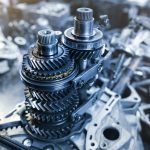Authentic classic cars evoke nostalgia, but poorly aligned headlights can dim their charm. Proper headlight alignment enhances safety while preserving the beauty of vintage vehicles. This guide streamlines the alignment process, taking you step-by-step through essential techniques and tools. Whether you're a seasoned enthusiast or a new owner, mastering this task is easier than you think. Illuminate the road ahead and ensure that your classic rides shine brightly!
Importance of Proper Headlight Alignment
Ensuring proper headlight alignment is crucial for both safety and visibility, especially in classic cars. Proper alignment directs light precisely where it's needed, enhancing nighttime visibility and reducing glare for oncoming drivers. This not only improves your ability to see obstacles and road signs but also ensures that other drivers are not blinded by your headlights, promoting safer driving conditions for everyone.
Also read : What steps should be taken if your vehicle overheats while driving?
Misaligned headlights can lead to several issues. If the beams are too high, they can dazzle oncoming traffic, increasing the risk of accidents. Conversely, if the lights are too low, they may not illuminate the road adequately, reducing your reaction time to potential hazards. Common causes of misalignment include suspension changes, accidents, or even routine wear and tear in classic cars.
Legal requirements for headlight alignment vary by region but generally mandate that headlights must be aligned to provide optimal visibility without causing glare. Failing to comply with these regulations can result in fines or failed vehicle inspections. Therefore, regular checks and adjustments of your headlight alignment are not only a matter of safety but also a legal obligation. Prioritising proper alignment ensures both compliance and a safer driving experience.
Topic to read : Mastering Electronic Stability Program Adjustments for Light Trucks with Diverse Load Capacities
Tools and Equipment Needed for Headlight Alignment
When it comes to headlight alignment, having the right tools is essential, especially for classic car maintenance. Proper equipment ensures precision and efficiency during the alignment process. Here's a list of essential tools you'll need:
- Alignment Gauge: This tool helps measure the angle and direction of your headlights. It's crucial for ensuring that the beams are aligned correctly.
- Screwdriver Set: Often, adjustments require a set of screwdrivers to fine-tune the headlight position.
- Tape Measure: Useful for measuring distances, ensuring that the headlights are at an equal height from the ground.
- Level Surface: A flat, level surface is necessary to accurately assess and adjust headlight alignment.
For classic cars, consider equipment that accommodates older models' unique needs. Classic car maintenance may require specialised alignment tools, such as vintage-compatible gauges or adapters.
When sourcing headlight alignment tools, automotive supply stores or online retailers are good starting points. Websites dedicated to classic car maintenance often offer specialised equipment. Additionally, car enthusiast forums can provide recommendations and reviews on the best tools for your specific vehicle model. Investing in quality tools not only ensures accurate alignment but also prolongs the life of your headlights, enhancing overall driving safety.
Step-by-Step Guide to Aligning Headlights
Aligning your classic car headlights accurately is essential for optimal performance. Follow this step-by-step guide to ensure your headlights are properly aligned.
Preparing the Vehicle
Before beginning the headlight alignment process, ensure your vehicle is parked on a level surface. This is crucial for accurate adjustments. Remove any extra weight from the car, as it can affect the alignment. Check that your tyres are inflated to the recommended pressure, as uneven tyres can skew results. Turn on the headlights and let them warm up for a few minutes to ensure consistent light output.
Measuring Headlight Height
Use a tape measure to determine the height of your headlights from the ground. Mark this height on a wall or garage door with tape. This reference point will guide you in adjusting the beams to the correct position. Ensure both headlights are at the same height to maintain symmetry and balance.
Adjusting the Headlights
Locate the adjustment screws on your headlights. Use a screwdriver to carefully adjust the beams. Align the centre of the beams with the marks on the wall. Ensure the beams are not too high or low, which can cause glare or insufficient road illumination. Recheck the alignment by turning the steering wheel to ensure the beams remain consistent.
Specific Considerations for Classic Car Models
Aligning headlights on classic car models presents unique challenges due to their distinct designs and components. These vehicles often require specialised approaches to ensure accurate headlight alignment.
Unique Challenges
Classic cars may have non-standard headlight assemblies that differ from modern vehicles, making alignment more complex. The materials and technologies used in older models can affect how adjustments are made. Additionally, these cars might have experienced wear and tear over the years, further complicating the alignment process.
Recommendations for Classic Cars
When working with classic car models, it's crucial to follow vehicle-specific adjustments. Each model may have distinct requirements for headlight positioning. Consulting the original manufacturer's specifications is essential to understand the correct alignment settings. This information can typically be found in the vehicle's manual or through classic car enthusiast communities.
Importance of Manufacturer Specifications
Adhering to manufacturer specifications ensures that the headlight alignment is not only accurate but also maintains the vehicle's authenticity. This is particularly important for classic car enthusiasts who value the original design and functionality of their vehicles. By following these guidelines, you can achieve optimal visibility while preserving the classic car's heritage.
Troubleshooting Common Headlight Alignment Issues
Addressing headlight issues promptly is essential for maintaining safety and visibility. Misalignment can manifest through various symptoms, such as uneven light distribution or inadequate road illumination. Recognising these signs early can help prevent potential accidents.
Identification of Common Misalignment Symptoms
Common symptoms of headlight alignment problems include one beam appearing higher or lower than the other, causing uneven light spread. Additionally, if you notice that your headlights are not illuminating the road far enough or are dazzling oncoming traffic, misalignment is likely.
Step-by-Step Troubleshooting Techniques
To troubleshoot alignment issues, start by parking your vehicle on a level surface and inspecting the headlights for visible damage or wear. Use a tape measure to ensure both lights are at the same height from the ground. If discrepancies are found, adjust the beams using the alignment screws, ensuring they align with the marks on a wall as a reference point.
When to Seek Professional Assistance
If troubleshooting does not resolve the issue, or if the alignment screws are inaccessible or damaged, it may be time to seek professional help. A qualified mechanic can provide precise adjustments and ensure that your headlights comply with legal standards, ultimately enhancing your driving safety.
Safety Considerations During Headlight Alignment
Ensuring headlight safety is paramount when conducting alignment tasks. Adhering to specific alignment precautions can prevent accidents and enhance the effectiveness of the process.
Safety Tips for Headlight Alignment
When working on headlights, always prioritise safety. Begin by parking the vehicle on a stable, level surface to prevent any unexpected movement. Ensure the car is turned off and the keys are removed from the ignition to avoid accidental electrical issues.
Importance of Protective Gear and Tools
Wearing protective gear, such as gloves and safety goggles, is crucial. These items shield you from potential hazards like sharp edges or debris. Utilising the right tools, such as insulated screwdrivers, further enhances safety by reducing the risk of electric shocks.
Guidelines for a Safe Work Environment
Conduct headlight alignment in a well-ventilated area. This practice is essential, especially if you're using chemicals or sprays during the process. Adequate ventilation prevents the build-up of harmful fumes, ensuring a safer working environment. Additionally, maintaining a clean workspace minimises tripping hazards, allowing for smoother and more efficient alignment activities.
Maintaining Headlight Performance Over Time
To ensure optimal headlight performance, regular headlight maintenance is essential. Begin by routinely inspecting the headlights for any signs of wear or damage. This practice helps in identifying potential issues early on, ensuring longevity.
Cleaning is a key component of headlight maintenance. Use a mild soap solution and a soft cloth to gently clean the headlight lenses, removing dirt and grime that may affect light output. For classic car headlights, special care is needed due to their unique materials. Avoid harsh chemicals that can damage the lenses or diminish their clarity.
Performance tips include checking the headlight bulbs regularly. Replace them if they appear dim or flicker, as this can compromise visibility. Additionally, inspect the headlight housing for moisture, which can lead to corrosion and affect performance.
Be vigilant for signs indicating the need for re-alignment or replacement. If you notice uneven light distribution or reduced visibility, it may be time to adjust or replace the headlights. Regular maintenance not only enhances safety but also extends the lifespan of your headlights, ensuring they perform effectively over time.
Visual Aids for Headlight Alignment
Visual aids play a vital role in the headlight alignment process, offering clarity and precision. They simplify complex instructions, making it easier to achieve accurate results. Utilising headlight alignment diagrams, instructional videos, and visual guides can significantly enhance your understanding and execution of the task.
Importance of Visual Aids
Visual aids, such as headlight alignment diagrams, provide a clear representation of the correct beam positioning, helping to avoid common errors. They serve as an invaluable resource, especially for those unfamiliar with the technical aspects of alignment.
Recommendations for Resources
For those seeking guidance, numerous instructional videos are available online. These videos offer step-by-step demonstrations, allowing you to visualise each stage of the alignment process. Websites dedicated to automotive maintenance often host comprehensive visual guides, which can be particularly beneficial for classic car enthusiasts.
Creating Your Own Guide
Creating a personalised alignment guide can be a practical solution. By documenting the alignment process through photos or sketches, you can develop a reference tailored to your specific vehicle model. This approach ensures that you have a reliable resource on hand for future adjustments, enhancing both accuracy and efficiency.
Resources and Further Reading
Exploring headlight alignment resources can significantly enhance your understanding of classic car maintenance. A well-rounded approach includes consulting a variety of materials such as books, articles, and websites dedicated to this niche.
For those interested in detailed guidance, numerous classic car guides are available. These publications offer comprehensive insights into the unique aspects of maintaining and restoring classic vehicles, including headlight alignment. Additionally, many automotive magazines feature sections dedicated to classic car care, providing valuable tips and techniques.
Online, forums and communities for classic car enthusiasts serve as a treasure trove of knowledge. Engaging with these platforms allows you to connect with fellow enthusiasts, exchange experiences, and gain advice from seasoned experts. Popular forums often have threads specifically discussing headlight alignment challenges and solutions.
When considering professional services, seek out specialists in classic car restoration. These experts possess the technical skills and historical knowledge necessary to address the specific needs of vintage vehicles. Recommendations from classic car clubs or enthusiast groups can guide you to reputable professionals.
For a deeper dive into the subject, explore additional reading materials focused on automotive history and technology. These resources provide context and background, enriching your appreciation and understanding of classic car headlight alignment.
















